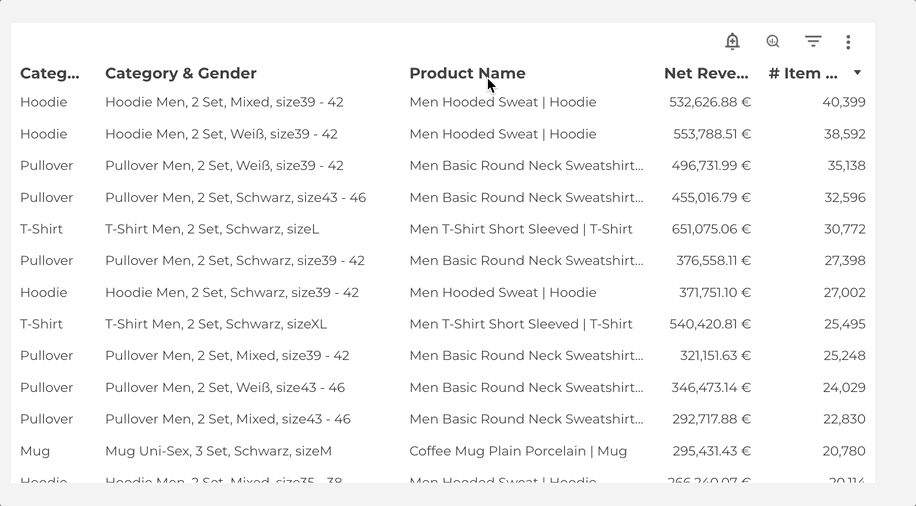
Over the past few months, the datadice team has come together for the first sprint of the Dashboard Circle. Datadice employees organized into groups and worked on various data analysis and engineering tasks in the Dashboard Circle. In this article, we will see the nitty-gritty of the Dashboard Circle, one of the knowledge-sharing strategies at datadice. Stay with us.
What is the Dashboard Circle?
In the knowledge economy, knowledge transfer plays a crucial role in the efficiency and effectiveness of a company. Studies show that most employees gain skills and knowledge on the job. Therefore, having a good knowledge-sharing strategy is crucial to increase companies' talent and productivity.
The Dashboard Circle is a knowledge-sharing roundtable that has been hosting discussions dedicated to data analysis and engineering at datadice. It is designed to promote debates between employees specializing in the field of data analytics. In other words, it is a gathering where data analysts and engineers share tips, tricks, and practical advice.
How is the Dashboard Circle Setup?
The Dashboard Circle is a mechanism where working groups present the status of their project and share the interesting things they learned. It takes place every two weeks. The dashboard circle is divided into sprints. Each sprint lasts for two to three weeks. At the end of each sprint, there will be a meeting where teams present their project's output.
One Dashboard Circle season should last for six to eight weeks. After that, there will be two weeks of break. Then, a new sprint starts, and the process continues with new projects.
In the Dashboard Circle, there are two types of groups: Working Group and Dashboard Circle. A Working Group is a team of 2 to 3 analysts working on any data analytics project. Each Working Group meets at least once a week and works on the project.

How did the first season of the Dashboard Circle go?
Now let’s have a look at how datadice implemented the Dashboard Circle.

In line with the setup stated above the two working groups have been working on two dashboard projects using public datasets with Google Data Studio between July and August 2022. The table below shows the timeline of the first Sprint.

Working Group 1
Working Group one has been working on one of the public datasets available on Google BigQuery – TheLook E-commerce. TheLook is a fake dataset that contains information about customers, products, orders, logistics, web events, and digital marketing campaigns. It is developed by the Looker team to mimic an online store.

What it planned to achieve was to develop a comprehensive dashboard that shows general revenue and customer-related statistics; average time of delivery as well as the number of returned products and the reason behind it. Moreover, the team was interested in answering which items are being sold faster and which ones should be stocked up in the storehouse with the help of a Machine Learning model.
The figure below shows some of the dashboards produced by the working group.

Working Group 2
The second working group was assigned to work on a sample dataset that contains de-identified Google Analytics data from an e-commerce store that sells Google branded items – Google Merchandise Store, The dataset contains information that is typical of what an eCommerce website would have. The team has conducted extensive research on the background of the Google Merchandise Store and the dataset, and identified possible KPIs and models. Accordingly, they prepared the plan shown below to carry out the project.

During the first sprint of the Dashboard Circle, working group 2 managed to produce an interactive dashboard as shown below.

Conclusion
In the knowledge economy, dissemination of knowledge becomes increasingly essential as knowing by itself is useless unless it is shared. The organization only benefits when knowledge is disseminated, transferred, shared, and leveraged. There should be communication network channels within the organization to facilitate the exchange of information and experiences.
In this article, we introduced the Dashboard Circle, one of the knowledge-sharing strategies applied at datadice. It is found the Dashboard Circle is a perfect tool for sharing information and skills within the company.
Further Links
Follow us on LinkedIn for insights into our daily work and important updates on BigQuery, Data Studio, and marketing analytics.
Subscribe to our YouTube channel for discussions on DWH, BigQuery, Looker Studio, and Google Tag Manager.
If you are interested in learning BigQuery from scratch, get access to our free BigQuery Course
Elevate your skills with Google Data Studio and BigQuery by enrolling in our Udemy course.
Need help setting up a modern, cost-efficient data warehouse or analytical dashboard? Email us at hello@datadice.io to schedule a call.







